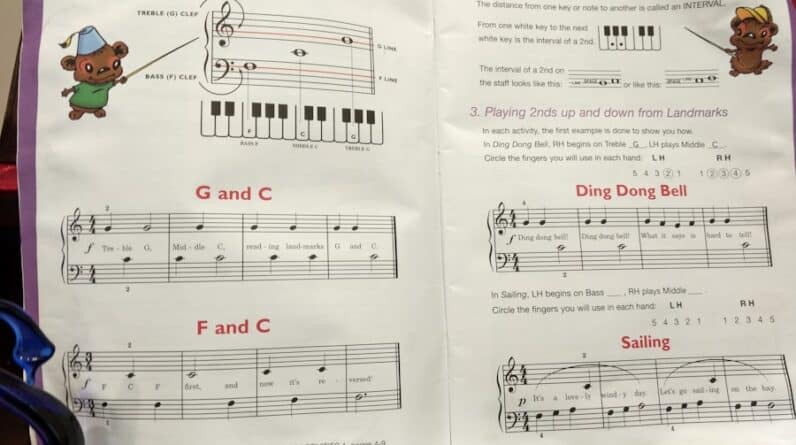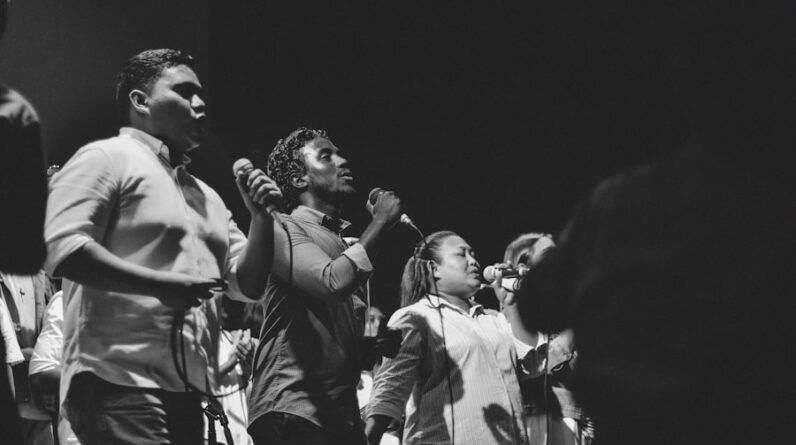
As you embark on your journey to become a versatile singer, it’s essential to grasp the distinct vocal techniques that define various music genres. Each style has its own set of rules and nuances that can significantly impact your performance. For instance, rock singing often emphasizes raw power and grit, while pop singing leans towards a polished, radio-friendly sound.
By understanding these differences, you can tailor your vocal approach to suit the genre you are exploring. In rock music, you might find yourself using techniques like belting and growling to convey emotion and intensity. This genre often encourages a more aggressive vocal style, allowing you to push your limits and express yourself freely.
On the other hand, pop singing typically requires a smoother, more controlled delivery. You’ll want to focus on breath support and pitch accuracy to create that catchy, memorable sound that resonates with listeners. By recognizing these contrasting techniques, you can begin to develop a versatile skill set that allows you to navigate various musical landscapes with ease.
Key Takeaways
- Different vocal techniques are used in various genres of music, requiring an understanding of the differences.
- Power and projection are essential in rock singing, requiring proper breath support and vocal placement.
- Pop singing requires mastering control and emotion to convey the message of the song effectively.
- Jazz singing is complex, requiring an understanding of improvisation, phrasing, and scat singing.
- R&B and soul singing demand an understanding of nuance, groove, and emotional delivery.
Developing Power and Projection in Rock Singing
When it comes to rock singing, power and projection are paramount. You want your voice to cut through the mix of instruments and reach the back of the venue without straining your vocal cords. To achieve this, you’ll need to work on your breath control and support.
Engaging your diaphragm is crucial; it acts as the powerhouse behind your voice, allowing you to project with strength and clarity. Practicing deep breathing exercises can help you build this foundation, enabling you to sustain notes longer and sing with more authority. In addition to breath support, experimenting with vocal techniques like belting can enhance your rock singing prowess.
Belting involves singing at a higher pitch with a powerful, resonant sound. It’s essential to find the right balance between power and technique; otherwise, you risk damaging your voice. Start by warming up your vocal cords and gradually increasing your volume while maintaining proper form.
As you gain confidence, you’ll discover how to harness your vocal power effectively, allowing you to deliver electrifying performances that captivate your audience.
Mastering Control and Emotion in Pop Singing

Pop singing is all about control and emotional connection. As you delve into this genre, you’ll want to focus on refining your vocal technique to achieve a smooth, polished sound. This involves mastering breath control, pitch accuracy, and dynamic range.
You may find it helpful to practice scales and vocal exercises that emphasize these elements, allowing you to develop a strong foundation for your pop performances. Emotion plays a significant role in pop music, as it helps convey the message of the song. To connect with your audience on a deeper level, you’ll need to tap into your own feelings and experiences.
This might involve interpreting lyrics in a way that resonates with you personally or experimenting with different vocal inflections to convey various emotions. By honing your ability to express yourself through your voice, you’ll create a captivating performance that leaves a lasting impression on listeners.
Navigating the Complexities of Jazz Singing
Jazz singing is a unique art form that requires a deep understanding of rhythm, phrasing, and improvisation. As you explore this genre, you’ll discover that jazz is not just about hitting the right notes; it’s about interpreting the music in a way that feels authentic to you. This often involves playing with timing and dynamics, allowing you to create a sense of spontaneity in your performances.
One of the key aspects of jazz singing is improvisation. Unlike other genres where melodies are often fixed, jazz allows for creative freedom in how you approach a song. You might experiment with scatting or adding embellishments to melodies, giving each performance a fresh twist.
To develop your improvisational skills, consider listening to renowned jazz vocalists and analyzing their techniques. By immersing yourself in the genre and practicing regularly, you’ll gain the confidence needed to navigate the complexities of jazz singing with ease.
Adapting to the Nuances of R&B and Soul Singing
R&B and soul singing are characterized by their rich emotional depth and intricate vocal techniques. As you dive into these genres, it’s essential to embrace the nuances that set them apart from others. One of the hallmarks of R&B is its emphasis on vocal runs and melismas—techniques that involve sliding between notes in a fluid manner.
To master these elements, practice scales while incorporating runs into your warm-up routine. Emotion is at the heart of R&B and soul music, so connecting with the lyrics is crucial for delivering an authentic performance. You’ll want to explore the stories behind the songs and find ways to express those feelings through your voice.
This might involve experimenting with different vocal textures or dynamics to convey vulnerability or strength. By immersing yourself in the emotional landscape of R&B and soul music, you’ll develop a unique style that resonates with both you and your audience.
Exploring the Artistry of Folk and Country Singing

Folk and country singing often tell stories that resonate deeply with listeners, making authenticity a vital component of these genres. As you explore folk music, focus on conveying the narrative through your voice while maintaining a sense of simplicity and sincerity. This might involve using a softer vocal tone or employing subtle inflections that enhance the storytelling aspect of the song.
In country music, there’s often an emphasis on vocal clarity and emotional delivery. You may find that incorporating elements like twang or drawl can add authenticity to your performances. Additionally, consider how instrumentation plays a role in folk and country music; understanding how your voice interacts with acoustic guitars or banjos can help you create a cohesive sound.
By embracing the artistry inherent in these genres, you’ll develop a unique style that captures the essence of folk and country music.
Embracing the Versatility of Musical Theater Singing
Musical theater singing requires a unique blend of vocal technique and acting skills. As you step into this world, it’s essential to understand how storytelling influences your vocal delivery. Each character has their own emotional journey, and your voice must reflect that journey authentically.
This means working on both your vocal technique and your ability to convey emotion through acting. In musical theater, projection is crucial since performances often take place in large venues without microphones. You’ll need to develop strong breath support and resonance to ensure your voice carries across the stage.
Additionally, consider how different styles within musical theater—such as ballads or upbeat numbers—require varying vocal approaches. By embracing this versatility, you’ll become a well-rounded performer capable of captivating audiences through both song and story.
Finding Your Unique Voice in Different Genres
As you explore various musical genres, it’s essential to remember that finding your unique voice is an ongoing journey. Each style offers opportunities for growth and self-discovery; by experimenting with different techniques and approaches, you’ll uncover what resonates most with you as an artist. Embrace the process of exploration—don’t be afraid to step outside your comfort zone and try new things.
Ultimately, your unique voice will emerge from the combination of influences you encounter along the way. Whether it’s drawing inspiration from rock legends or finding solace in folk melodies, each experience contributes to your artistic identity. By remaining open-minded and committed to honing your craft across genres, you’ll cultivate a distinctive sound that reflects who you are as a singer—one that captivates audiences no matter where your musical journey takes you.





